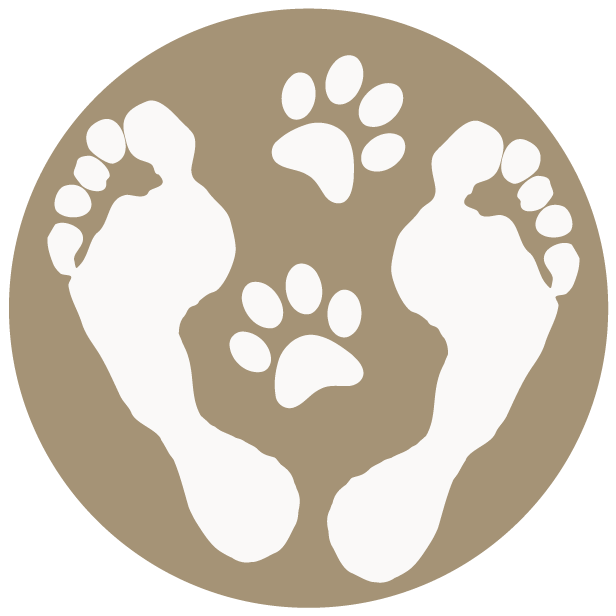Nature vs. Nurture: Watching Behavior Unfold In Real Time
I’ve been able to watch the Nature vs. Nurture debate play out in real time — through Ava, and through raising her puppies.
It’s remarkable how much of who they are was written into them from the very beginning — their instincts, energy, drives, sensitivities, even their communication styles. That’s Nature.
But I’ve also seen how profoundly environment shapes the expression of all of that. Structure, safety, boundaries, routine, leadership, and emotional congruence — these are what either nurture stability or amplify stress. Environment doesn’t just shape behavior; it impacts the nervous system. That’s Nurture.
The nervous system’s job is simple: to keep us safe.
It’s constantly scanning for cues of safety or threat, deciding whether the body can rest and connect — or whether it needs to guard and defend.
When the environment feels unpredictable, inconsistent, or tense, the nervous system shifts into protection mode.
When it feels stable, supportive, and clear, it settles. Regulation becomes possible. Connection becomes possible.
This is the foundation of Chapter Eight: The Nervous System Doesn’t Lie.
Because our dogs’ bodies — just like ours — are always listening to the world around them.
They’re constantly asking, “Am I safe?”
Trauma disrupts that system.
It rewires it.
As two social species, dogs and humans are born hardwired for connection — but trauma rewires us for protection and disconnection.
Trauma isn’t the event itself, but what happens inside us as a result of it — the disruption, the rewiring, the way the nervous system internalizes what’s happened and begins to interpret the world through that lens.
The body learns that safety is no longer guaranteed, and behaviors form around survival and control.
We see it in people — anxiety, people-pleasing, withdrawal, perfectionism, addiction, control.
We see it in dogs — anxiety, appeasement, shutdown, reactivity, compulsions, aggression, control.
All of these are coping strategies built around the same question: “Am I safe?”
And every one of them is an attempt to create that safety and predictability — because predictability is safety.
Safety is the foundation.
Without it, connection can’t exist.
And when connection can’t exist, behavior becomes protection — not partnership.
We — the human end of the leash — are a huge part of that environment. Of Nurture.
I’ve seen how the tension and anxiety in our home through the rescue effort rippled through the dogs.
How my own anxiety — in my tireless efforts to make sure everyone is safe, cared for, and okay, doing it all without support (and not having support is deeply dysregulating) — shaped the emotional tone around us all.
Now, as I prepare to uproot my life once again and move across the country because I still haven’t found a suitable home for Ava, I can feel how every emotion, every uncertainty, every ounce of my own energy — the stress, the unanswered questions, the powerlessness, the heartbreak — is impacting them.
Dogs don’t just live in our homes. They live in our nervous systems.
Ava is another perfect example.
She came into this world with strong drives — prey, pack, and defense — which we cannot “remove,” but can absolutely channel and direct. Those drives helped her survive after being abandoned, pregnant, and alone in the SoCal desert.
Environment shaped everything that followed.
When she was with me, she regulated and returned to safety through structure, consistency, and care. She felt safe. She knew she could depend on me. We co-parented together. Her nervous system could rest because her needs — physical, emotional, and energetic — were being met.
But when she was placed in an environment beyond their capabilities — with people whose energy was much softer than hers — imbalance began. Her drives weren’t being spoken to. Her energy wasn’t being sufficiently depleted (and this is key). Her needs weren’t being met.
Just as we might run, lift, or punch a bag to release tension, dogs need outlets too — physical and emotional.
High-drive dogs carry even more when emotional energy piles on top of physical energy.
Without proper outlets, that unspent energy has to go somewhere — and it often surfaces as behavior.
So Ava became dysregulated again.
New behaviors emerged, and existing ones intensified — not because she’s “broken” or “bad,” but because her environment no longer supported her regulation.
Every ship needs a captain.
And in her current environment, no one is at the helm — so Ava is assuming it.
This is basic canine psychology: when dynamics become imbalanced and there’s no leadership, a dog will rise to fill the void.
Because leadership is safety.
They’re living in our world. It’s up to us to show them how.
That’s the power — and the responsibility — of Nurture.
Because while we can’t change genetics, we can absolutely influence environment.
And environment is everything.
--------
Chapter Eight: The Nervous System Doesn’t Lie
From The Human End of the Leash: Dog Training’s Missing Link
Amazon: https://a.co/d/7gXouI6
Signed & Personalized Copies (with custom bookmark + highlighter):
https://kimberlyartley.com/books-and-ebooks
To dive deeper:
Explore the "Training the Traumatized Dog" masterclass inside Dog Mom University.
You’ll learn how trauma rewires the canine nervous system — and how to help dogs heal, regulate, and thrive from the inside out.
dogmomuniversity.thinkific.com
--------
The GoFundMe has been reactivated to help with Ava — and this is urgent.
I’m working to cover relocation costs and secure a one-month board-and-train program to help her return to regulation and get her safely out of her current environment. Right now, this is the only viable option, as we haven’t been able to find an appropriate foster for her.
Ava’s life truly depends on getting her out as soon as possible.
Any amount of support — sharing, donating, spreading the word — makes a real difference.
Thank you for helping me keep my promise to her. 💛
https://gofund.me/3ef19a44

